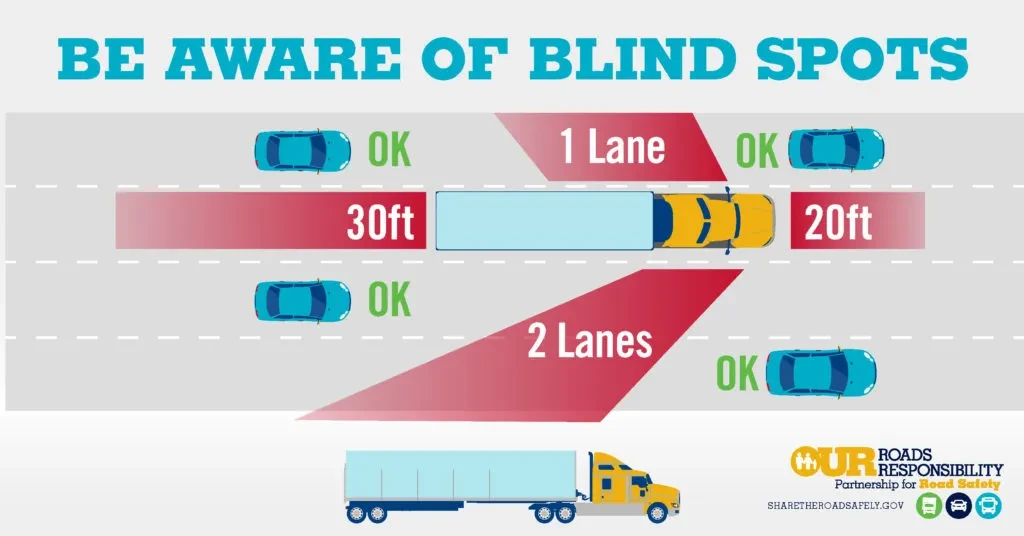An accident not only slows you down — but it can also hurt you or the people around you.
Even worse, you might be held legally liable if you are at fault for an accident, and no one wants to go to jail.
An expensive lawsuit on top of it all? Nope, you don’t want none of that.
A common cause of collisions? Blind spots.
What are the blind spots of a delivery vehicle?
Want to reduce the risks that come with blind spots (also known as “no zones”)? Know exactly where your blind spots are.
Here is a quick guide to help you train your senses and save your life.
Directly in front of the truck
The front of the vehicle is one BIG blind spot.
Big rig trucks — especially those that don’t have a cab-over design (where the driver cabin sits over the engine) — have super big blind spots.
The driver can only see the “nose” of the truck and not what is right in front of it.
This can make you likely to hit smaller cars, objects, and people right in front of the vehicle.
Front blind spots may cause rear-end accidents.
Be especially aware of front blind spots when going forward while parking or pulling out of parking spaces. If necessary, get out of the car and check to make sure there is nothing in front of you first.
Directly behind the truck
The back of the delivery vehicle is another blind spot.
Make sure you are not only checking your rear view mirror but also swiveling your head to physically look over your shoulder to avoid bumping people, pets, mailboxes, or cars when going backward.
It can also be helpful to have a vehicle with a backup sensor that beeps when you get too close to an object.
Some vehicles also have cameras on the back that can improve your range of sight.
Along the left side of the truck
The left side of a truck can also have a blind spot, running parallel along the length of the vehicle’s body.
The wider and longer the truck, the larger the blind spot.
Swiveling your head to look for objects on the side of the vehicle — instead of solely relying on side view mirrors — can be helpful.
Also, make sure to always use turn signals, for example, when pulling into or out of parking spaces or switching lanes on the road.
Along the right side of the truck
The right side of the truck is also a big blind spot area that runs along the length of the truck.
Again, make sure to swivel your head (look over your shoulder) to identify blind spots — and use your damn side view mirrors!
It is also important to use turn signals so motorists, pedestrians, and cyclists know where your vehicle is headed — and to stay out of your way.


